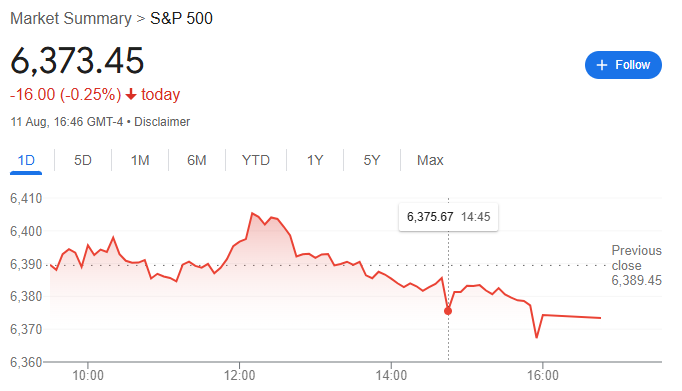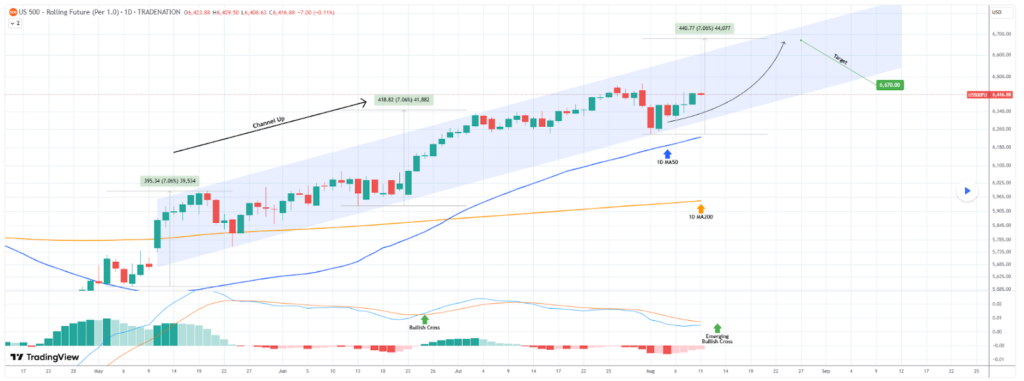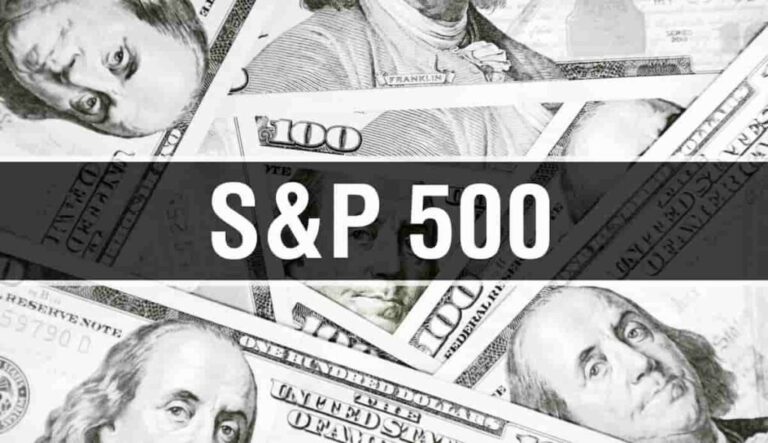Technical indicators are suggesting that the benchmark S&P 500 may be lining up for more gains in the coming weeks, possibly pushing past the 6,600 mark.
Although the index is showing short-term weakness, it remains near all-time highs, having ended the last session at 6,373, down 0.25% for the day. Year-to-date, however, the S&P 500 is up 8.6%.

In terms of technical structure, analysis by TradingShot in an August 11 TradingView post indicated that the S&P 500 remains locked in a three-month ascending channel, with price action since the May 12 candle consistently respecting support from the 50-day moving average (MA50).

According to the analysis, the two prior bullish legs within the channel each posted gains of 7.06%. Both rallies began after the price rebounded from the MA50, mirroring the current setup. The latest bounce is supported by an “emerging bullish cross” on the daily MACD, signaling fresh upward momentum.
A measured move equal to the previous legs would lift the index toward 6,670, the upper boundary of the channel, in the medium term.
The bullish outlook hinges on the MA50 holding as support. Below it, the 200-day moving average (MA200) sits as the next major floor, but a breakdown would threaten the channel structure.
Wall Street turns bullish on S&P 500
The technical picture also aligns with strong fundamentals, with several Wall Street analysts maintaining that the index is likely to see record highs in the coming months. As reported by Finbold, banking giant Morgan Stanley in late July projected the S&P 500 could reach 7,200 by mid-2026.
Overall, most of Wall Street turned bullish on the index after the early April tariff-induced market dip, which had raised fears of a potential recession. Many strategists who had turned bearish have now revised their forecasts higher.
For instance, Oppenheimer raised its year-end S&P 500 target to 7,100 from a previous estimate of 5,950, citing robust corporate earnings, resilient economic data, and favorable macroeconomic conditions. Other bullish revisions came from BMO (6,700), Goldman Sachs (6,600), and Bank of America (6,300).
However, some concerns remain, including elevated levels of insider selling among S&P 500 companies and emerging signs of global deflation, which could point to a potential downturn ahead.
Featured image via Shutterstock






